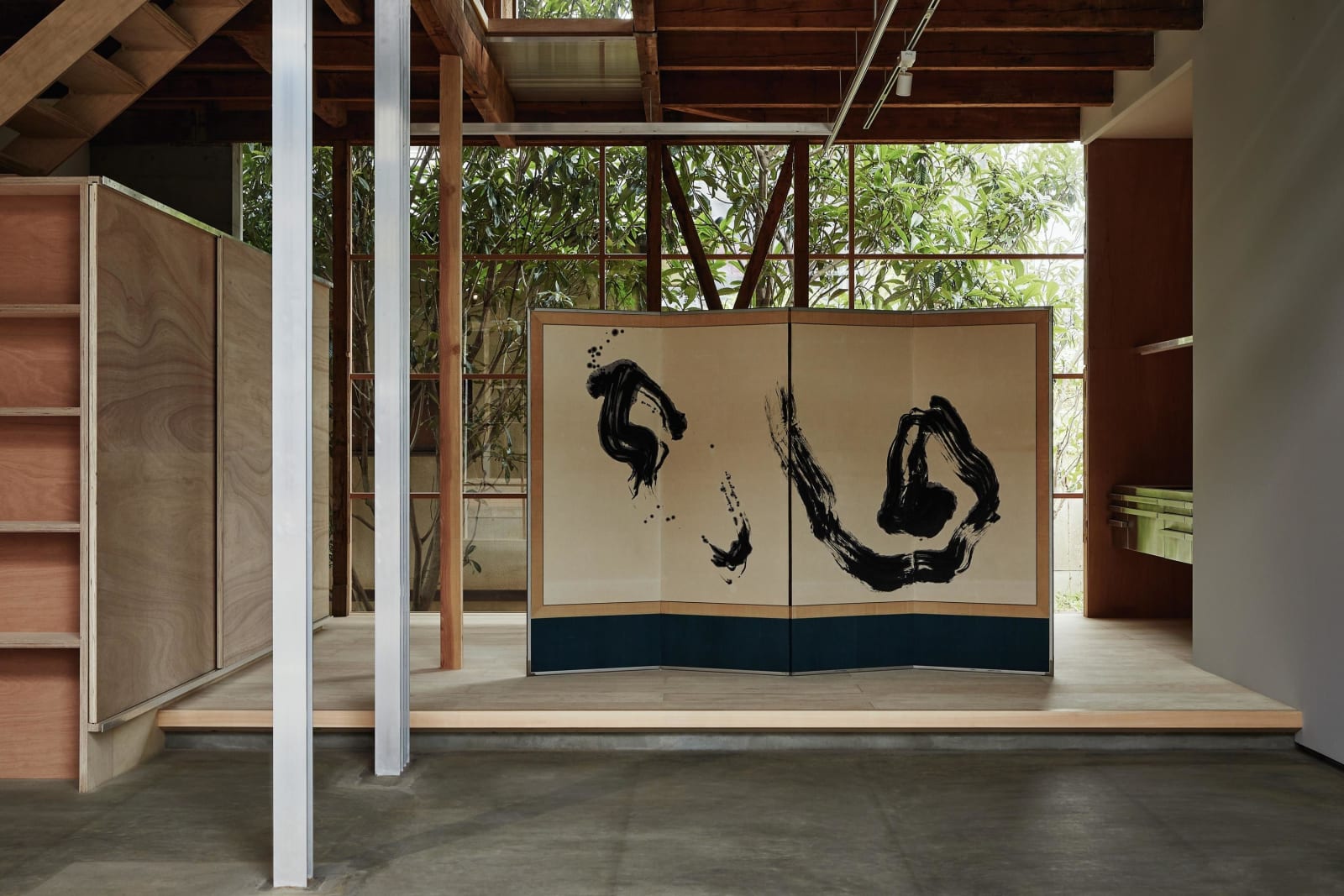Morita Shiryū (1912–1998)
Ekō
Ink on paper, four-panel folding screen
1967
With a label signed by the artist
139 x 267 cm
182 x 284 cm (overall)
1967
With a label signed by the artist
139 x 267 cm
182 x 284 cm (overall)
Literature
Morita Shiryu Catalogue Raisonné: 1952–1998. Uji: Soryusha, 2019.
In Asian painting, yohaku (negative/blank space) is understood as an integral part of the work; in calligraphy, the background left blank is taken as a matter of course. Such principal-subordinate relationship – the shape of the unwritten area is dependent upon that of the written characters– were a prime target of Morita’s desire to challenge the ingrained formal logic of calligraphy. As early as in 1953, he hosted a panel discussion “Calligraphy and Abstract Painting,” where he espoused the oil painter Nakamura Makoto’s point of view that unpainted areas were a “form in the negative” in abstract painting similar to the idea of yohaku in Asian art. Morita’s insistence upon the idea of “yohaku in calligraphy” allowed to integrate two seeming contradictions into Japanese calligraphy: traditional and modern, and Eastern and Western. Starting from there, it became one of the main objectives in Morita’s art making to redefine the true meaning of space. Embracing the idea of “absolute nothingness” from the Kyoto School of philosophy was crucial to Morita. He conceived of calligraphy as a metaphysical act to manifest “the dynamic movement of life,” in which the artist is no more bound to the physical aspects of ink, brush, and paper, and instead reaches out for his ideal of freedom.
The phrase eko derives from the Zen term eko hensho, meaning “introspection” in Morita’s interpretation. Through the act of constant introspection, the practitioner is able to reach the state of enlightenment, the ultimate goal in Zen Buddhism that is equated with the concept of mu (nothingness). For Morita, art was the vehicle to practice that introspection throughout his life.
Morita Shiryu (avant-garde calligrapher; 1912–1998)
Avant-garde calligrapher from Hyogo Prefecture. Like fellow artist Inoue Yuichi, Morita studied under the calligraphy master Ueda Sokyu. He co-founded the avant-garde group Bokujinkai together with Inoue and was the founder and editor of the journal Bokubi (Beauty of Ink), both of which revolutionized traditional Japanese calligraphy and spread knowledge of Japanese avant-garde calligraphy to an international audience. He was posthumously awarded the Medal of Honor with Dark Blue Ribbon.
The phrase eko derives from the Zen term eko hensho, meaning “introspection” in Morita’s interpretation. Through the act of constant introspection, the practitioner is able to reach the state of enlightenment, the ultimate goal in Zen Buddhism that is equated with the concept of mu (nothingness). For Morita, art was the vehicle to practice that introspection throughout his life.
Morita Shiryu (avant-garde calligrapher; 1912–1998)
Avant-garde calligrapher from Hyogo Prefecture. Like fellow artist Inoue Yuichi, Morita studied under the calligraphy master Ueda Sokyu. He co-founded the avant-garde group Bokujinkai together with Inoue and was the founder and editor of the journal Bokubi (Beauty of Ink), both of which revolutionized traditional Japanese calligraphy and spread knowledge of Japanese avant-garde calligraphy to an international audience. He was posthumously awarded the Medal of Honor with Dark Blue Ribbon.



